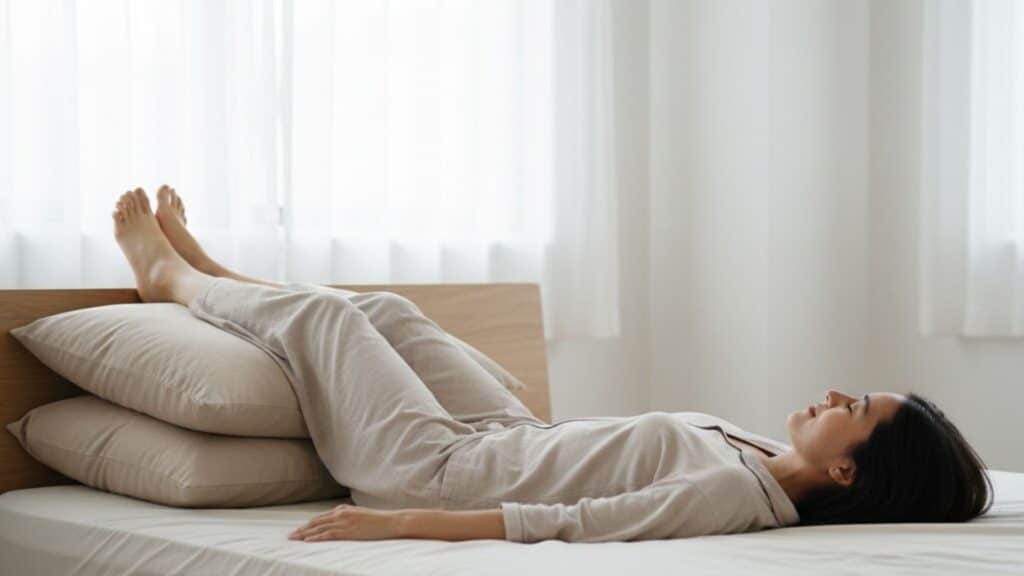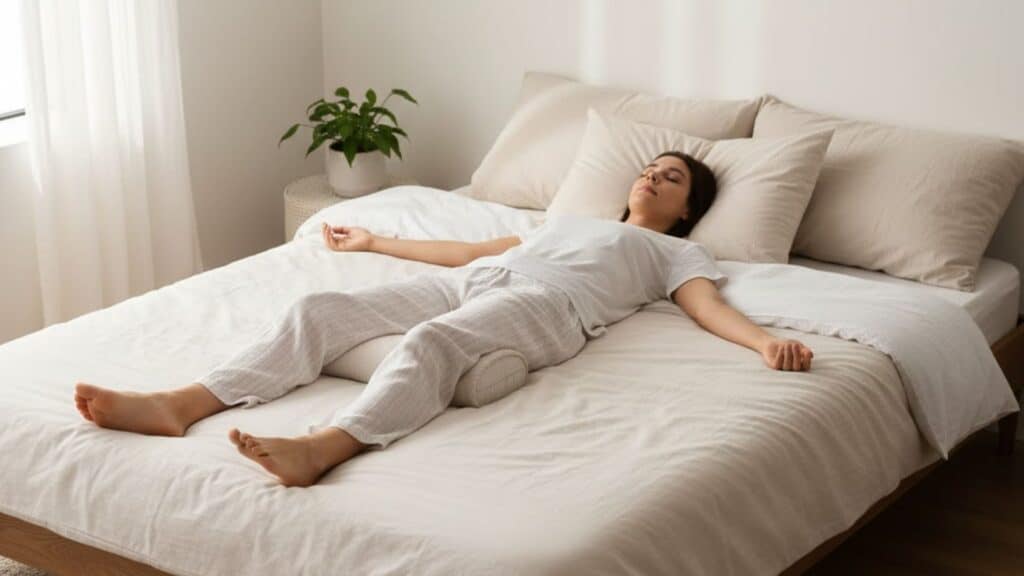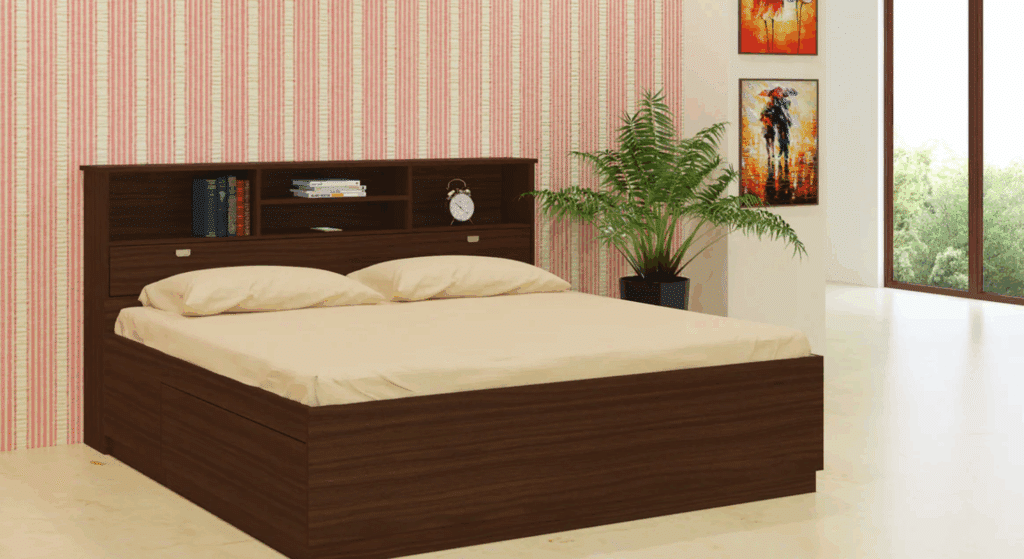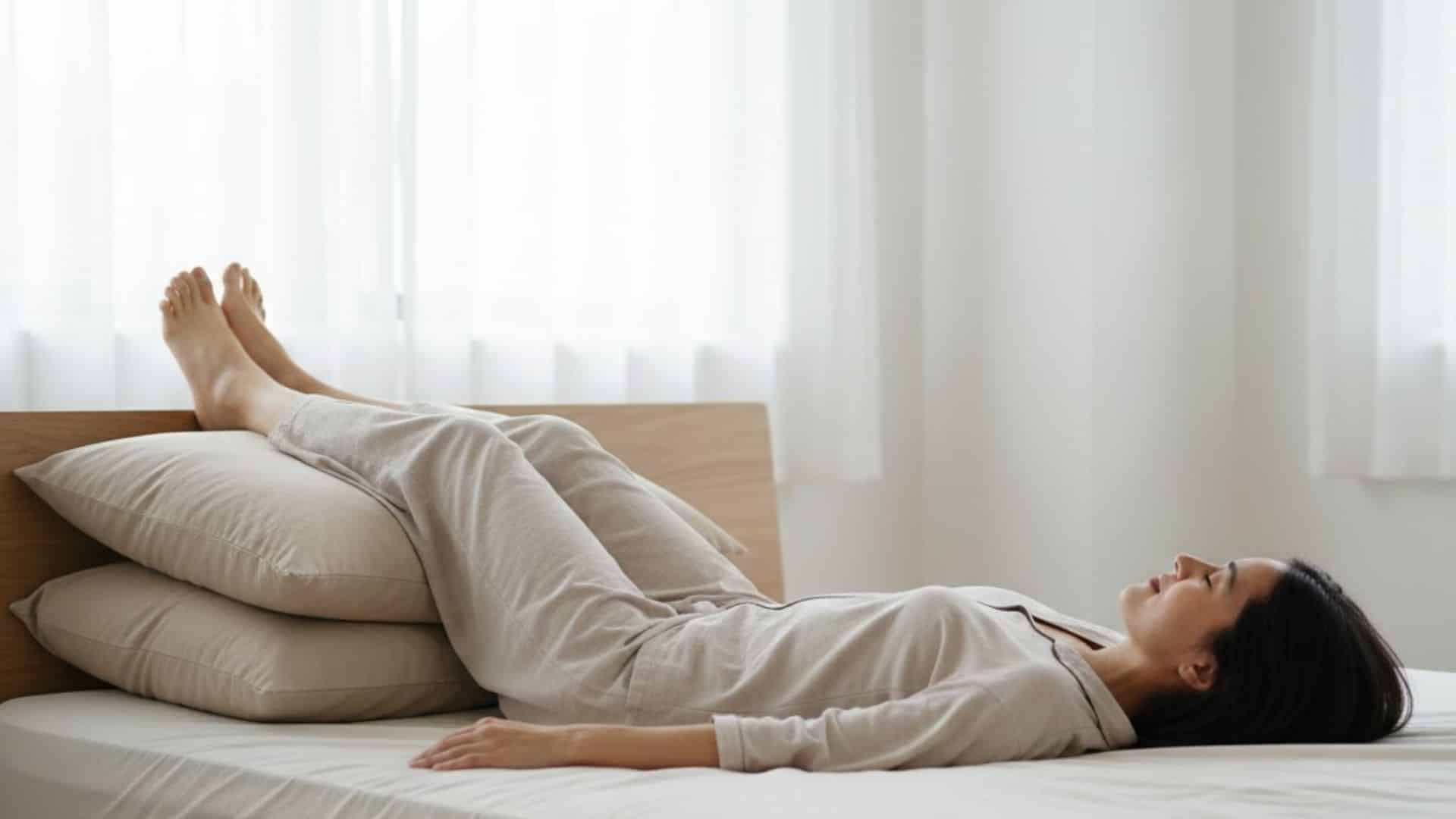Are cold feet and leg cramping robbing you of a good night’s sleep? Finding the best sleeping position for peripheral artery disease can transform how you rest and recover.
I know the struggle of dealing with poor circulation that makes your legs feel heavy and uncomfortable.
PAD creates unique challenges because your arteries can’t deliver enough blood to the areas that need it most. Unlike other conditions, PAD symptoms often get worse when you lie down flat at night.
Elevating your legs and finding positions that encourage blood flow makes all the difference. You can take control of your comfort by positioning your body to work with your circulation. Tonight can be the start of better sleep and improved leg health.
This information is for educational purposes only, and individual results may vary. Always consult your healthcare provider for personalized advice.
Understanding PAD and Its Impact on Sleep
Peripheral Artery Disease (PAD) happens when narrowed arteries reduce blood flow to your legs and feet. Common symptoms include leg pain, cramping, numbness, and cold feet that often worsen at night.
These uncomfortable symptoms can seriously disrupt your sleep and leave you exhausted every morning. Poor circulation makes it difficult to find a comfortable sleeping position that works for you.
According to research from the National Center for Biotechnology Information, PAD significantly affects sleep quality and health. Your sleeping position can either help or hurt your circulation during rest at night.
Certain positions improve blood flow and reduce leg swelling for better comfort. Finding the right position is crucial for getting the restful sleep your body needs.
Best Sleeping Positions for Alleviating PAD Symptoms
I’ve found that the right sleeping position can make a huge difference in managing PAD symptoms overnight. These positions help improve blood flow and reduce the discomfort that keeps you awake.
1. Sleeping on Your Back with Elevation

Lie flat on your back with your legs slightly elevated using pillows or a wedge. This position helps improve circulation and reduce the swelling in your legs significantly.
Elevating your legs reduces the heaviness and pain that often come with PAD at night. Better blood flow means less pressure on your veins and arteries throughout the night. You can adjust the pillow height to find what feels best for you.
2. Side Sleeping with a Pillow Between Your Legs
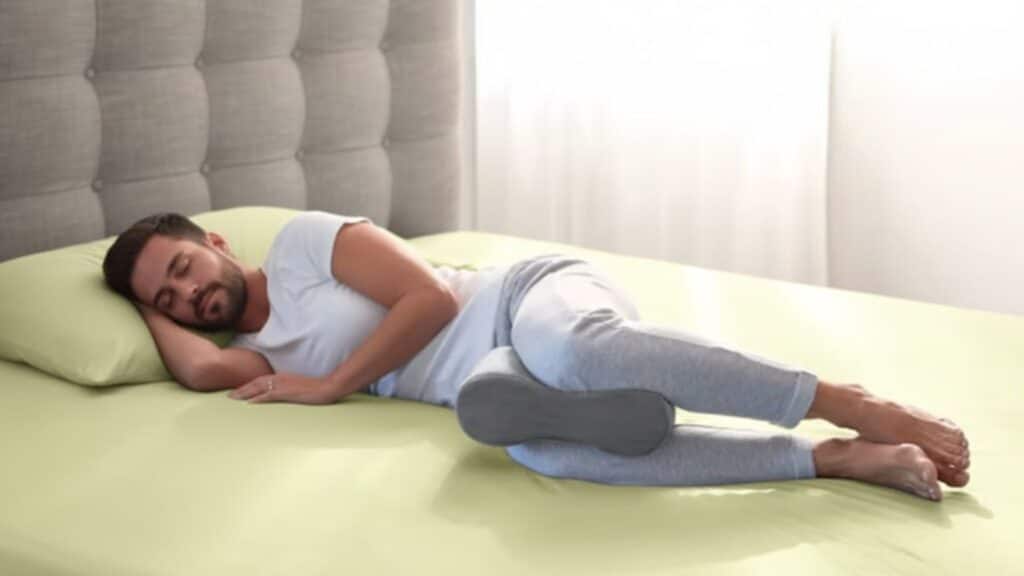
Sleep on your side with your legs bent and a pillow placed between your knees. This position prevents leg compression and reduces swelling by keeping your legs naturally aligned. The pillow stops your legs from resting on each other, which can restrict blood flow.
Side sleeping with proper support helps maintain healthy circulation throughout the lower limbs at night. Many doctors recommend this position for people dealing with circulation problems.
3. Fetal Position (On Your Side)

Curl into the fetal position on your side with your knees pulled toward your chest. Place a pillow between your legs for extra support and proper alignment throughout the night.
The fetal position reduces pressure on your lower limbs and improves circulation significantly during sleep.
It opens the space between your joints, helping relieve tension and discomfort. This natural curled position reduces strain on the arteries in your legs.
4. Sleeping on Your Stomach with Pillow Support
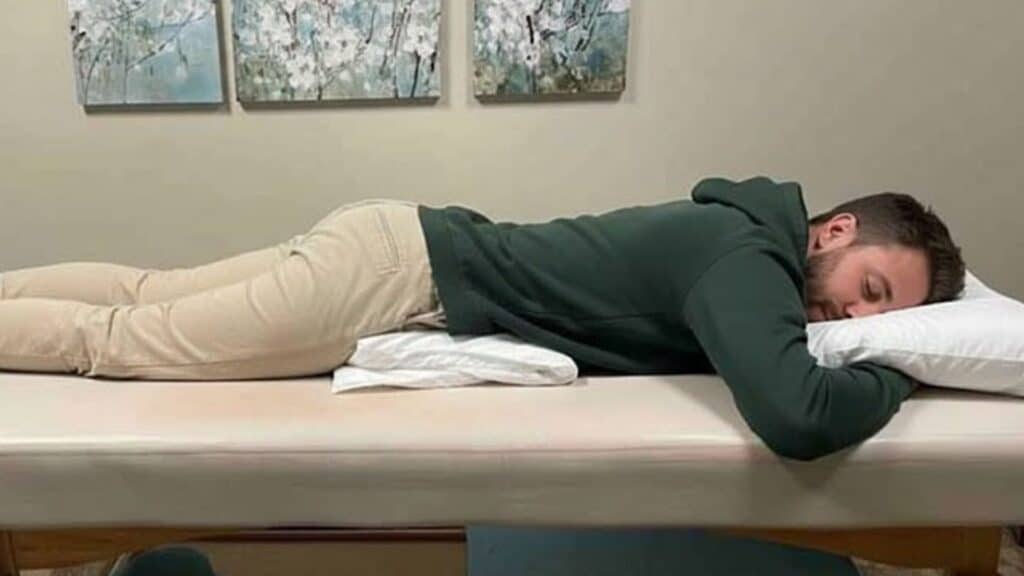
Lie on your stomach with a pillow under your abdomen and another under your feet. This position can sometimes help improve circulation in your lower limbs by reducing arterial pressure.
Proper pillow placement under your feet helps relieve discomfort and allows better blood flow. While stomach sleeping isn’t ideal for everyone, some people find it comfortable with proper support. Only use this position if it feels comfortable for you.
5. Sleeping with Your Legs Resting on an Adjustable Bed

Use an adjustable bed to elevate both the head and foot sections to your preference. Adjustable beds allow you to find the optimal position that relieves pressure on your legs. This customization promotes better circulation, which is crucial for people suffering from PAD symptoms.
Raising your legs slightly while keeping your body propped up reduces swelling and arterial pressure. Many people with PAD find that adjustable beds provide the best relief overnight.
Additional Tips for Improving Sleep with PAD
I’ve discovered that combining good sleeping positions with other strategies works even better for PAD relief. These extra tips can help you manage symptoms and sleep more comfortably every night.
- Use Supportive Pillows: Use body pillows or extra cushions to elevate your legs and ensure proper alignment throughout the night.
- Consider Leg Compression Sleeves: Wear compression sleeves or stockings that promote circulation and help manage swelling while you sleep.
- Maintain Good Sleep Hygiene: Keep a regular sleep schedule and create a comfortable sleep environment to promote better overall sleep quality.
- Avoid Sleeping Flat on Your Back: Don’t sleep flat on your back without elevating your legs, as this may worsen swelling and discomfort.
- Do Leg Exercises Before Bed: Try light leg exercises or gentle stretching to promote blood flow and reduce stiffness before bedtime.
These simple additions to your nighttime routine can significantly improve your comfort and circulation. Experiment with different combinations to find what works best for your specific needs.
When to Seek Medical Advice for PAD
See a doctor immediately if your leg pain becomes unbearable or significantly interferes with daily activities. Worsening swelling despite trying various sleeping positions and treatments also requires professional medical attention.
Persistent numbness and tingling that doesn’t improve with position changes needs evaluation by a healthcare provider. Untreated PAD can lead to serious complications like leg ulcers, infections, or severe circulation problems.
Watch for skin changes, wounds that won’t heal, or increasing coldness in your feet. Consult with your healthcare provider or a vascular specialist for personalized treatment options and advice.
They can recommend medications, lifestyle changes, or procedures to improve your circulation. Don’t wait until symptoms become severe to seek help.
The Bottom Line
The best sleeping position for peripheral artery disease focuses on elevation and supporting healthy blood flow. You now understand how positioning affects your circulation and what your body needs at night.
I hope you feel empowered to make changes that improve your vascular health during sleep. Remember that elevation is key to helping blood return properly throughout your entire body.
Monitor how your legs feel in the morning after trying different elevation techniques tonight. Better circulation during sleep means less swelling, reduced pain, and improved healing over time.
Your vascular system needs proper support to work efficiently while you rest each night. Have you noticed which elevation method helps your circulation the most? Let me know in the comments below!


